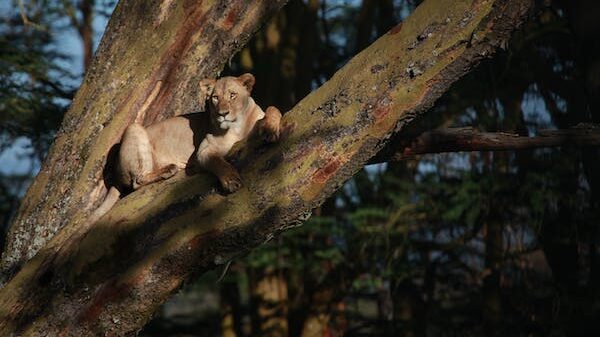Buzzing around us every day, bees are often overlooked and taken for granted. But did you know they play a crucial role in our ecosystem? Not only do they pollinate plants and help produce the food we eat, but they also have fascinating behaviors and intricate social structures. In this blog post, we’ll take a closer look at the secret life of bees and uncover some surprising facts that you never knew about these incredible creatures! Get ready to be amazed by the world of bees!
Introduction to the Secret Life of Bees
The Secret Life of Bees is a fascinating book that tells the story of a group of bees who live in a hive. The book is full of interesting facts about bees, their life cycle, and their habits. Here are some fascinating facts about bees that you may not know:
Basic Biology of Honeybees
Honeybees are social insects that live in hives. A hive is a colony of bees that contains a queen, drones, and workers. The queen is the only bee in the hive that can lay eggs. The drones are male bees whose job is to mate with new queens. Workers are female bees whose job is to take care of the hive and its contents.
Bees communicate with each other through a process called pheromone communication. Pheromones are chemicals that are released by bees into the air to signal to other bees what they should do. For example, when a bee finds a good source of food, it will release a pheromone that tells other bees where to find the food.
Bees use their sense of smell to identify different types of flowers. They can also see ultraviolet light, which helps them find nectar in flowers. When a bee collects nectar from a flower, it also collects pollen on its body. Pollen is a powdery substance that contains the male reproductive cells of plants.
When a bee returns to the hive, it gives the nectar and pollen to another bee. This bee then stores the nectar and pollen in cells inside the hive. The cells are made up of wax secreted by worker bees.
Interesting Behaviors and Habits of Honeybees
Honeybees are amazing creatures with a fascinating secret life. Here are some interesting behaviors and habits of honeybees that you may not have known about:
-Honeybees communicate with each other through a process called “waggle dance.” This involves dancing in a figure-eight pattern to indicate the location of food or water to other bees.
-Honeybees have excellent memories and can remember specific flowers they’ve visited, as well as the locations of those flowers.
-Honeybees are very social creatures and live in colonies of up to 60,000 bees. Within the colony, there is a strict hierarchy with different roles for each bee.
-Honeybees are hard working creatures and can fly up to 15 miles per hour! They visit up to 100 flowers during a single foraging trip and can collect up to 50mg of pollen on their bodies.
-Honeybees produce honey from the nectar they collect from flowers. Honey is used as food for the bees and provides them with energy.
The Symbolic Significance of Bees in History, Folklore, and Religion
Bees have been revered throughout history and across cultures for their industriousness and ability to produce honey. But there is more to these buzzing insects than meets the eye. Here are some fascinating facts about bees that you may not know.
They have been symbols of industry and hard work since ancient times. In Egyptian hieroglyphs, bees represent royalty, and in Greek mythology, bees are associated with Apollo, the god of sunlight and healing. In Christian art, bees symbolize Jesus Christ as the “true vine” (John 15:1).
They also play an important role in folklore and traditional medicine. In many cultures, bees are believed to be able to cure diseases and ward off evil spirits. Bee stings were once used as a treatment for arthritis, and honey was thought to have medicinal properties.
Today, bees are still revered by many people around the world. In some religions, such as Hinduism and Islam, bees are considered sacred animals. In China, beekeeping is an ancient tradition that is still practiced today.
So next time you see a bee, take a moment to appreciate all that this amazing creature represents!
Beekeeping Practices & Products
Beekeeping is the practice of keeping bees in man-made hives, in order to collect their honey. It is a centuries-old practice, which has seen a resurgence in recent years as more people become interested in sustainable and natural forms of food production.
There are a number of different beekeeping practices and products, all of which have their own benefits and drawbacks. The most common type of beekeeping is commercial beekeeping, where hives are kept in large numbers in order to produce large quantities of honey. This type of beekeeping can be very intensive, and often uses harmful chemicals and pesticides.
Small-scale or hobbyist beekeeping is becoming increasingly popular, as it requires less time and effort than commercial beekeeping, and can be done without the use of harmful chemicals. Some small-scale beekeepers even keep their hives in urban areas, such as on rooftops or in community gardens.
The products of beekeeping include honey, beeswax, propolis, and royal jelly. Honey is the most well-known product of bees, and is used in a variety of foods and beverages. Beeswax is used to make a variety of products including candles, cosmetics, and polishes. Propolis is a sticky substance that bees use to seal up cracks in their hive; it has antibacterial properties and can be used medicinally. Royal jelly is a nutrient-rich substance that bees feed to their larvae; it is sometimes consumed by humans
Benefits of Eating Local Honey
If you’re like most people, you probably think of honey as a delicious sweetener for your tea or breakfast cereal. But did you know that honey is also a powerful medicine? That’s right – honey has been used to treat everything from colds and coughs to wounds and burns for centuries.
And if you’re looking for an even more potent dose of medicine, look no further than local honey. That’s because local honey contains pollen from the flowers and plants in your area, which can help build up your immunity to allergies. Not to mention, it’s also delicious!
So next time you’re at the farmers market or grocery store, be sure to pick up a jar of local honey. Your taste buds (and your health) will thank you!
Endangered Status of Bees
They are one of the most essential insects on the planet, providing pollination services for a huge variety of plants and crops. Unfortunately, bees are in decline all over the world due to a variety of factors including habitat loss, pesticide use, and disease. This decline has led to several bee species being classified as endangered.
The rusty-patched bumble bee was once common in the eastern United States but has declined by 87% since the late 1990s. It was officially listed as an endangered species in 2017. The main threat to this species is habitat loss due to development and agricultural practices.
The Hawaiian yellow-faced bee is another species that is struggling. These bees are native to Hawaii and are the only bees found in the state. They are important pollinators of native plants but have declined by up to 95% in some areas due to habitat loss and introduced predators such as ants and wasps. In 2016, the Hawaiian yellow-faced bee was federally listed as an endangered species.
These are just two examples of the many bees that are in trouble all over the world. It’s important that we do what we can to protect these vital insects before it’s too late.
Ways to Help Save the Bees
There are many ways that you can help save them ! Here are a few things that you can do:
1. Plant bee-friendly flowers in your garden.
2. Avoid using pesticides and herbicides in your garden.
3. Provide a water source for them in your garden by placing a shallow dish filled with water and rocks inside of it.
4. Educate yourself and others about their importance and their decline in population.
Conclusion
Overall, The Secret Life of Bees is an incredible work that has captured the hearts and minds of readers for decades. It’s filled with intriguing characters, heartwarming moments, and captivating stories. Whether you’re a longtime fan or just discovering the novel for the first time, we hope this article has shed some light on all the fascinating facts behind The Secret Life of Bees. If you’ve yet to read it yourself, now might be a perfect time to dive into this beloved classic!










